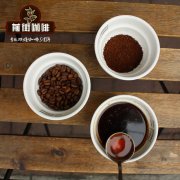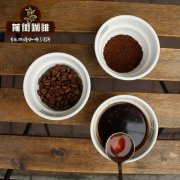How to measure the extraction rate of coffee? Do you know how to calculate the extraction rate of coffee?

You may have heard the barista say, "this cup of coffee is overextracted." The term "overextraction" is just a simple way to say that it tastes too bitter and makes some kind of mistake. Let's explore the world of extraction more deeply!
Extraction
So what is extraction? How much of the coffee powder is dissolved in water? So, if we simply say, for example, from a dose of 20 grams, 4 grams go into the cup. In general, the extraction is expressed by the extraction yield%, which in this case is 20% (4 g / 20 g).
The extraction rate% can be calculated by the following formula:
Extraction rate% = brewing coffee (g) x TDS (%) / dose (g)
For example, extraction rate% = 36 g x 10% / 18 g = 20%
Extracting coffee means how much coffee liquid you actually have in your cup, not the amount of water you use to make coffee. For example, to make a cup with Hario V60, you may have to brew the cup with 250g of water, but you will end up with nearly 210g of coffee. With the exception of immersion brewers (Aeropress, French kettle, smart cup, etc.), you need to use brewing water.
The dose refers to the amount of dry coffee you are using. Measurements are made before and after grinding in order to obtain an accurate number. Keep in mind that even a change of 0.1 grams will have an effect on the final result.
TDS comes from the word total dissolved solids, which simply means how strong your coffee is. TDS is measured as a percentage, and the content of different types of coffee usually ranges from 1 to 12%. The higher the percentage, the stronger the coffee. To measure TDS, you will need a refractometer.
So what do we do with this number?
The correct or ideal extraction yield% is thought to be 18-22%, according to a study conducted by Coffee Brewing Institute (Professor EE Lockhart of the Massachusetts Institute of Technology) in the 1950s, which has been verified by SCAA in recent years. A percentage of less than 18% is generally considered "inadequate extraction", which means that you are not getting enough from dry coffee to the cup. Insufficient extraction can lead to an increase in sour or sour taste and an empty experience during tasting. On the other hand, the percentage of more than 22% is considered "overextracted", which means that too much dry coffee ends up in the cup. Excessive extraction can cause bitterness and / or caramel in the cup, and the experience may be "too much".
Extraction should not be related to the consistency of coffee. Espresso does not mean a high extraction rate, but actually means a lower extraction rate than usual. Similarly, mild coffee does not mean low extraction. This is usually a problem when making espresso because pouring more water into the coffee will make the drink milder, but it will extract more at the same time. As a result, you will end up with light and overextracted espresso (bad).
18-22% is not always correct.
To make matters more complicated, an extraction rate of 18-22% does not always mean a good extraction rate (balanced flavor). The extraction methods of coffee are also different in different producing areas, roasting, grinding machines, brewing methods, etc., therefore, the good extraction range of some coffee may be 18 minutes 5-19 minutes 5%, others 20 minutes 2-21 minutes 1%. Recently, some geeks (Matt Perger and Scott Rao) have argued that the extraction rate of coffee is not high, but it is only your fault or your grinder's fault. This means that some parts of your ground coffee are extracted more than others. This may be the result of cross flow or poor grinding particle size distribution in brewing.
Important Notice :
前街咖啡 FrontStreet Coffee has moved to new addredd:
FrontStreet Coffee Address: 315,Donghua East Road,GuangZhou
Tel:020 38364473
- Prev

What is the TDS in coffee? how to measure the concentration of coffee? how much is espresso?
It's hard to taste coffee, but one thing people always taste is the strength of coffee. We can all agree that espresso is stronger and therefore more flavored than filtered coffee. But let's take a closer look at the power of coffee again! How do we measure strength? Just saying that something is strong is not scientific or accurate, we need to measure strength so that I
- Next

What can the baking date tell you about coffee? the fresher the beans, the better.
The barbecue date is not all. First of all, we need to clear one thing. We are talking about the baking date, but this alone does not let you know the taste of coffee. When you buy food, you will look for the freshest food. Of course, you need to check the best date. Then there are visual cues: the hardness of avocados, the bluish purple on onions, and the redness of fish eyes. However, to get to the bottom of the food
Related
- Beginners will see the "Coffee pull flower" guide!
- What is the difference between ice blog purified milk and ordinary milk coffee?
- Why is the Philippines the largest producer of crops in Liberia?
- For coffee extraction, should the fine powder be retained?
- How does extracted espresso fill pressed powder? How much strength does it take to press the powder?
- How to make jasmine cold extract coffee? Is the jasmine + latte good?
- Will this little toy really make the coffee taste better? How does Lily Drip affect coffee extraction?
- Will the action of slapping the filter cup also affect coffee extraction?
- What's the difference between powder-to-water ratio and powder-to-liquid ratio?
- What is the Ethiopian local species? What does it have to do with Heirloom native species?

